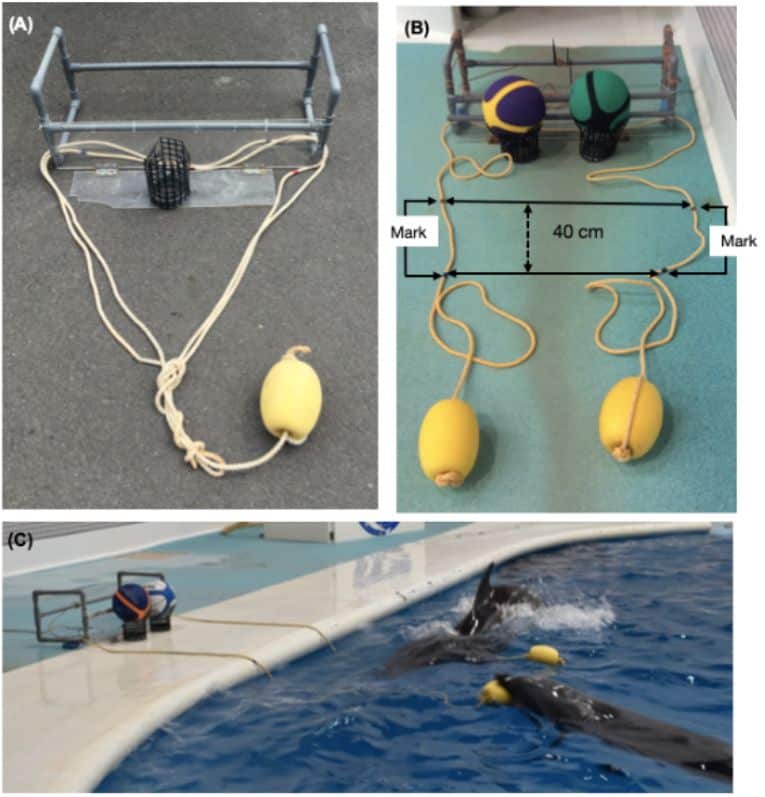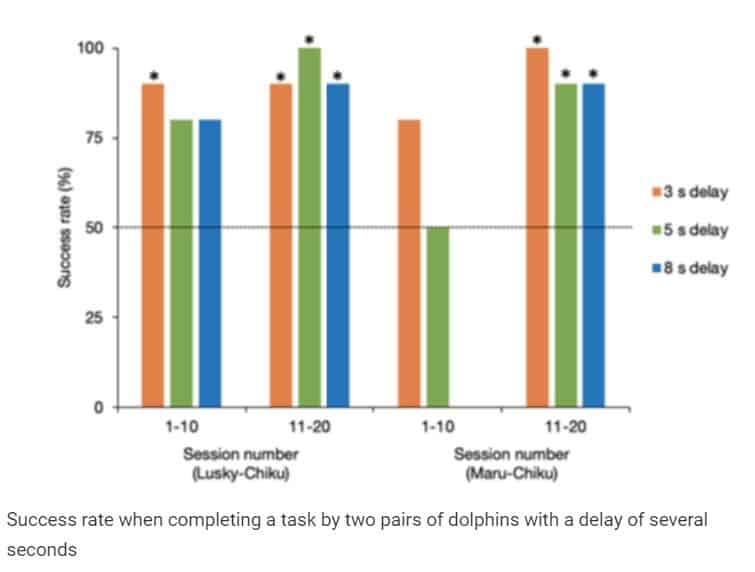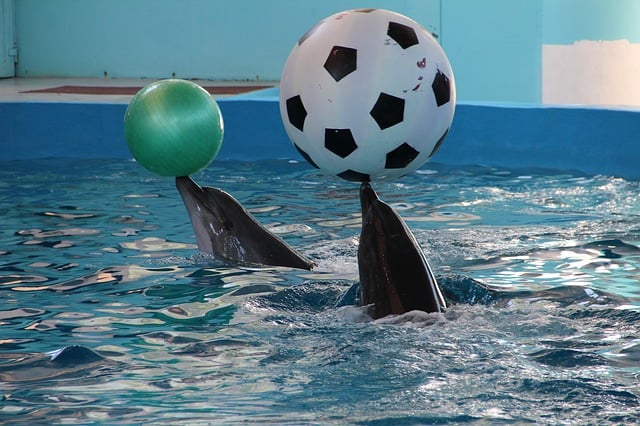Japanese scientists have found that bottlenose dolphins (Tursiops Truncatus) are capable of teamwork. To do this, they taught the three animals to pull out the balls using a design that could only be set in motion by pulling the ropes together. In addition, it turned out that the dolphins pay attention to what the partner does when performing the task, and wait for their partner to complete the task together.
For social animals it is very important not only communication but also the ability to cooperate, that is, jointly to solve any problem. It is important, for example, in joint hunting, protection from the enemy and effective education of offspring.
It is not so easy to evaluate teamwork in the wild: it requires long-term observations. Another option is to monitor how animals perform joint actions, being grown in captivity and after pre-training. To do this, for example, the task of tug-of-war is used: experiments with such a task use a special installation that can be attracted to itself, only pulling two ropes at once. Animals, therefore, need to understand that they can only do it together – and get the rewards they are going to.
To test whether bottlenose dolphins can cope with the joint tug of rope to obtain the treat, scientists led by Tisato Yamamoto of Kyoto University have trained three members of the species to pull the rope so that their favourite toy – basketballs fall into the pool.
Three dolphins took part in the experiment. At first, the installation was intended for one animal: in order to get the ball, you could pull only one rope. Interestingly, the bottlenose dolphins were not shown what to do to get the ball: their trainers simply asked the animals to bring the ball.

After successful training (it took one to nine days) the animals were shown the installation that was intended for two dolphins and taught to handle it. Dolphin attempts to get the ball were divided into blocks: in each of them, six to seven attempts. One pair learned to get the balls to the third block (success was more than 50 per cent – that is, above the accidental hit), and the other pair coped with the task immediately.
The scientists then looked at whether the bottlenose dolphins would not only be able to pull the rope together, but also wait for each other to begin the task. If one dolphin pulls the rope, the second end will be out of reach, and the task will not be possible to perform: that is why cooperation in the performance of this task implies that the animals will be waiting for each other.
It turned out that the bottlenose dolphins understand that the partner must wait: swim up to the rope, they wait for the second and begin to pull only when other partner swims up. In turn, the dolphin, which swims second, understands that it is waiting, and begins to swim to the installation faster. Depending on the pair, the training of such an expectation either took place immediately or took 10 to 20 attempts.

Thus, this experiment shows that bottlenose dolphins are capable of learning. Interestingly, representatives of this species, apparently, also pay attention to the behaviour of their partner when performing the task, realizing that without it a successful outcome is impossible.
Two years ago, with the help of a similar experiment with tug-of-war, scientists were able to find out that wolves living in captivity are much more willing and effective in helping each other than domestic Dogs: On the basis of this, the scientists concluded that the ability to cooperate decreased in the process of domestication.
